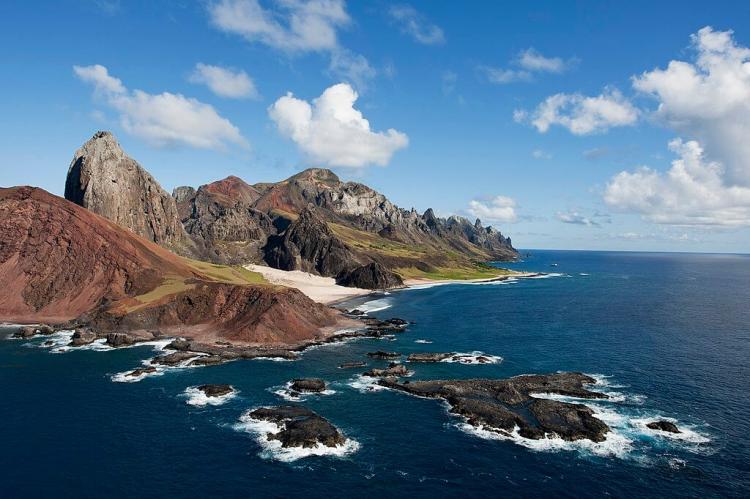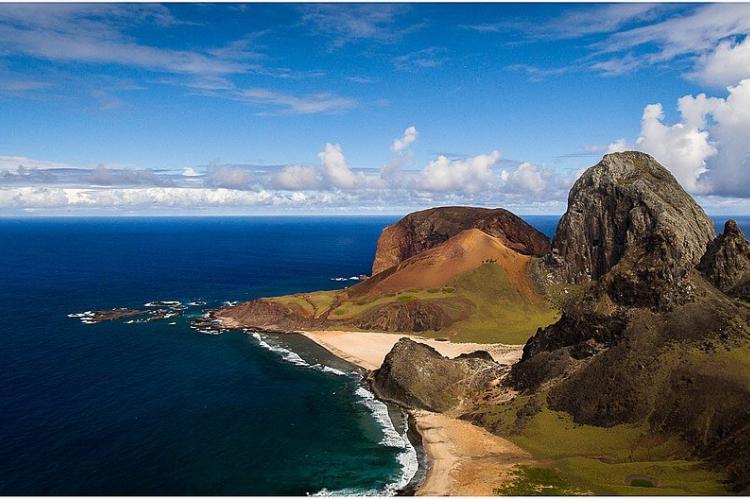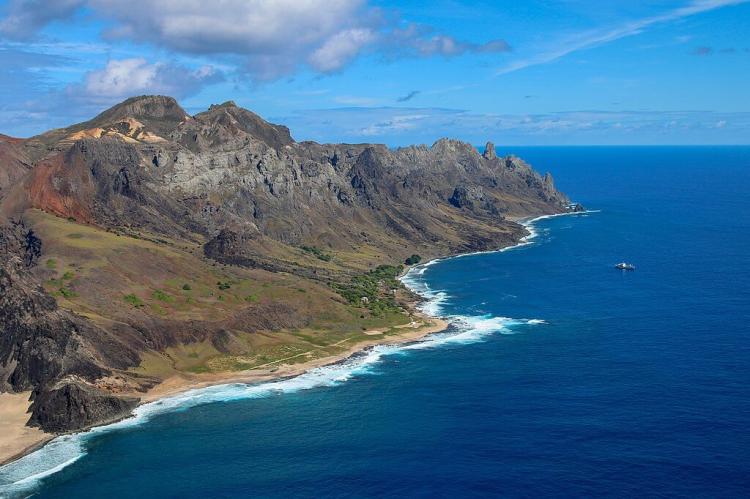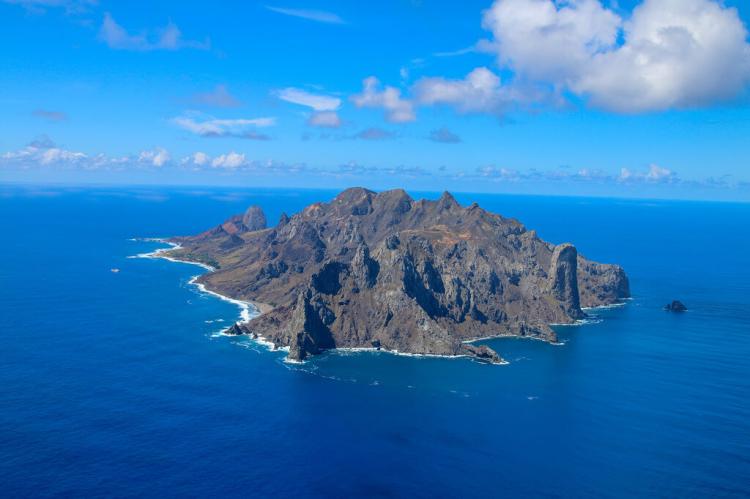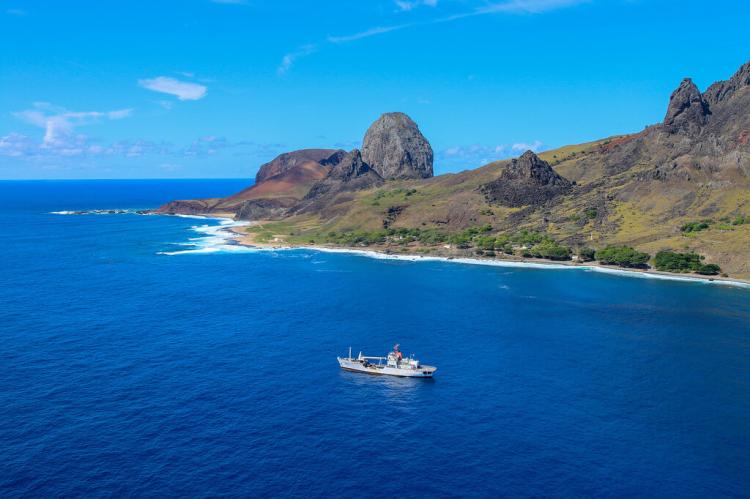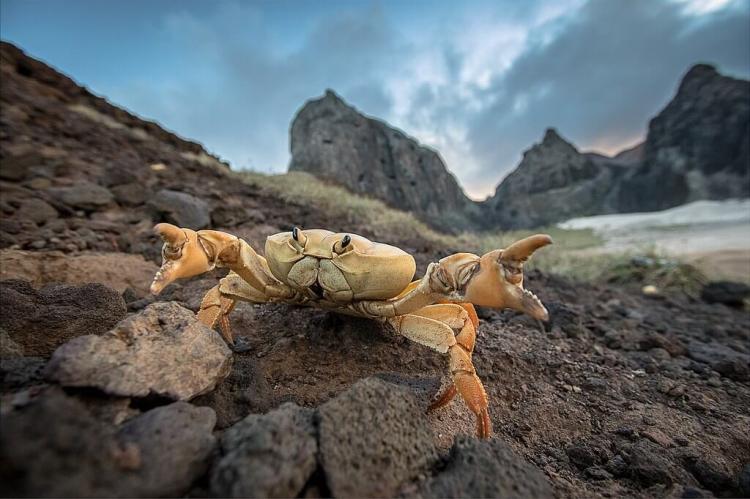Trindade and Martim Vaz: A Remote Sanctuary in the Atlantic
Off the eastern coast of Brazil, in the heart of the Atlantic Ocean, lies the Trindade and Martim Vaz archipelago. This archipelago comprises two main islands and numerous smaller islets and rocks formed from volcanic activity. It remains a stark, isolated outpost largely untouched by human hands.
Volcanic Outposts: The Natural and Ecological Significance of Trindade and Martim Vaz
Located in the heart of the Atlantic Ocean, the Trindade and Martim Vaz archipelago is Brazil's easternmost point, approximately 1,140 km (700 mi) off the coast of the Brazilian state of Espírito Santo. Comprising two main islands, Trindade and Martim Vaz, along with numerous smaller islets and rocks formed from volcanic activity, the archipelago is a stark, isolated outpost that remains largely untouched by human hands. Despite its isolation, Trindade and Martim Vaz hold significant ecological, historical, and strategic importance, offering unique opportunities for scientific exploration and wildlife conservation. Declared a Natural Monument in 2002, the archipelago is a protected sanctuary that stands as a testament to the resilience of nature and the ongoing efforts to preserve these remarkable ecosystems.
Historical and Strategic Significance
The Trindade and Martim Vaz islands were first discovered in 1502 by Portuguese explorers led by Estêvão da Gama. Along with the rest of Brazil, they became part of the vast Portuguese Empire. Over the centuries, these islands served as strategic maritime outposts due to their remote location in the Atlantic. In 1895, Trindade was temporarily occupied by the United Kingdom, which referred to it as South Trinidad. However, diplomatic negotiations eventually returned sovereignty over the islands to Brazil.
Today, the islands are uninhabited except for a rotating military garrison stationed on Trindade Island. This presence underscores the archipelago's ongoing strategic significance and ensures the protection of the area from unauthorized access and exploitation. Given the islands' ecological sensitivity and strategic value, access to the archipelago is strictly controlled, with visits requiring special permission from Brazilian authorities.
Trindade Island: The Heart of the Archipelago
Trindade Island, the largest in the archipelago, covers an area of approximately 10 square kilometers (4 square miles). As an extinct volcanic island, Trindade features a dramatic landscape characterized by rugged terrain, steep cliffs, and numerous volcanic plugs and lava domes. The island's highest point, Pico Desejado, reaches an elevation of 620 meters (2,030 feet) and offers breathtaking views of the surrounding ocean.
Trindade's landscape is shaped by its volcanic origins, with features such as Pico da Trindade at 590 meters (1,940 feet) and Pico Bonifácio at 570 meters (1,870 feet) adding to the island's rugged topography. Notable landmarks include Pico Monumento, a striking peak resembling a slightly inclined cylinder, rising 270 meters (890 feet) above the west coast. The island also boasts several scenic beaches and cliffs, making it an attractive location for scientific research and ecotourism.
Despite its harsh environment, Trindade Island is home to a diverse array of plant and animal species, some of which are found nowhere else on Earth. The island's unique ecosystem has been shaped by its isolation, volcanic activity, and the challenges posed by human interference over the centuries.
Martim Vaz Islands: A Rocky Outpost
Located approximately 38 km (24 mi) northeast of Trindade, the Martim Vaz Islands consist of a small, rocky group of islets with a total area of around 0.3 square kilometers (0.12 square miles). These islands are characterized by their sheer cliffs, rocky terrain, and lack of vegetation. The main island, Ilha Martim Vaz, reaches a height of 175 meters (574 feet) and is surrounded by smaller islets such as Ilha do Norte, Rochedo da Agulha, and Ilha do Sul.
The Martim Vaz Islands are important breeding sites for various seabird species, offering a haven in the middle of the Atlantic. Despite their barren appearance, these islands play a crucial role in maintaining the region's biodiversity, serving as nesting grounds for birds and other wildlife that thrive in remote, undisturbed environments.
Climate and Environmental Challenges
The Trindade and Martim Vaz archipelago experiences a tropical oceanic climate, with an average annual temperature of 25°C (77°F). The islands are frequently subjected to brief, intense rain showers, locally known as pirajá, which last only a few minutes but contribute to the islands' water supply.
Historically, Trindade Island was covered by dense forests of Colubrina glandulosa trees, which reached heights of up to 15 meters (49 feet). However, human activities, including the introduction of non-native species and deforestation, have significantly altered the island's environment. The removal of native trees led to severe soil erosion, the loss of freshwater springs, and a dramatic reduction in the island's biodiversity. Today, the island's vegetation is dominated by tree ferns such as Cyathea coelandii, grasses, and shrubs, with only small remnants of the original forest surviving.
The introduction of goats, sheep, pigs, and other non-native animals has caused further ecological damage, leading to the extinction of several endemic plant and animal species. Despite these challenges, efforts are underway to restore Trindade's natural environment and protect its remaining biodiversity.
Biodiversity and Conservation Efforts
The Trindade and Martim Vaz archipelago is renowned for its unique biodiversity, which includes several endemic species of plants, seabirds, and marine life. The islands are Brazil's most important nesting site for green sea turtles, with an estimated 1,800 nests laid annually on the sandy beaches of Trindade. Peak nesting season occurs from January through March, attracting turtles and conservationists to the island.
Seabirds are a prominent feature of the archipelago's wildlife, with species such as the great frigatebird (Fregata minor), lesser frigatebird (Fregata ariel), and Trindade petrel (Pterodroma arminjoniana) finding refuge on these remote islands. Trindade is the only known breeding site for the Trindade petrel in the Atlantic, highlighting the island's critical role in global bird conservation. Other seabirds, such as the red-footed booby, masked booby, and sooty tern, also thrive in the archipelago, benefiting from the absence of natural predators and human disturbance.
Marine life around the islands includes various fish species, crustaceans, and cetaceans. Humpback whales use the waters around Trindade as a nursery. The archipelago's diverse range of marine organisms makes it attractive for scientific research and ecological studies.
Conservation efforts are focused on protecting the unique flora and fauna of the Trindade and Martim Vaz archipelago. The Brazilian government has implemented measures to control island access, restrict human activities, and support scientific research. Establishing the Oceanographic Station on Trindade Island and the work of Brazil's national Marine Turtle Protection and Research Program (TAMAR-IBAMA Project) are vital to these conservation initiatives.
The Trindade and Martim Vaz Islands Tropical Forest Ecoregion
The tropical forest ecoregion of Trindade and Martim Vaz is classified within the Neotropic ecozone and is characterized by tropical and subtropical moist broadleaf forests. Although much of the original forest has been lost, small areas of Trindade still retain native vegetation, including the endemic tree fern Cyathea coelandii and other resilient plant species. Efforts to reforest the island and restore its natural habitat are ongoing, focusing on reintroducing native species and controlling invasive ones.
The ecoregion's fauna includes a variety of seabirds and terrestrial species that have adapted to the island's unique environment. The islands' isolation and harsh conditions have shaped a distinctive ecosystem, making the Trindade and Martim Vaz tropical forest ecoregion an important area for ecological research and conservation.
Conclusion
The Trindade and Martim Vaz archipelago is a remote, rugged outpost with significant ecological, historical, and strategic value. Despite the challenges posed by human activities and environmental changes, the islands continue to support a diverse array of plant and animal species, some of which are found nowhere else on Earth. The Brazilian government's efforts to protect and preserve these islands as a Natural Monument underscore the importance of conservation and sustainable management of natural resources. As a sanctuary for wildlife and a center for scientific research, Trindade and Martim Vaz remind us of the need to safeguard our planet's most fragile and unique ecosystems.
